The Hendrik Conscience Heritage Library (Erfgoedbibliotheek Hendrik Conscience) traces its origins back to 1481, when city secretary Willem Pauwels donated 41 books to the city. The library has evolved over centuries into a repository of over one million works, encompassing Dutch literature, early printed books, and regional history.
In 1883, the institution found a permanent home in the former Jesuit Sodality building on Hendrik Conscienceplein, opposite the Sint-Carolus Borromeuskerk. A bronze statue of Hendrik Conscience, seated in thoughtful repose, marks the entrance and pays tribute to the Flemish writer after whom the library is named. The sculpture was created by Belgian artist Frans Joris and cast by the Compagnie des Bronzes in Brussels. Hendrik Conscience himself stood as the model for the statue, but, due to illness, he was unable to attend the official inauguration of the monument in August 1883. He passed away just a few weeks later.
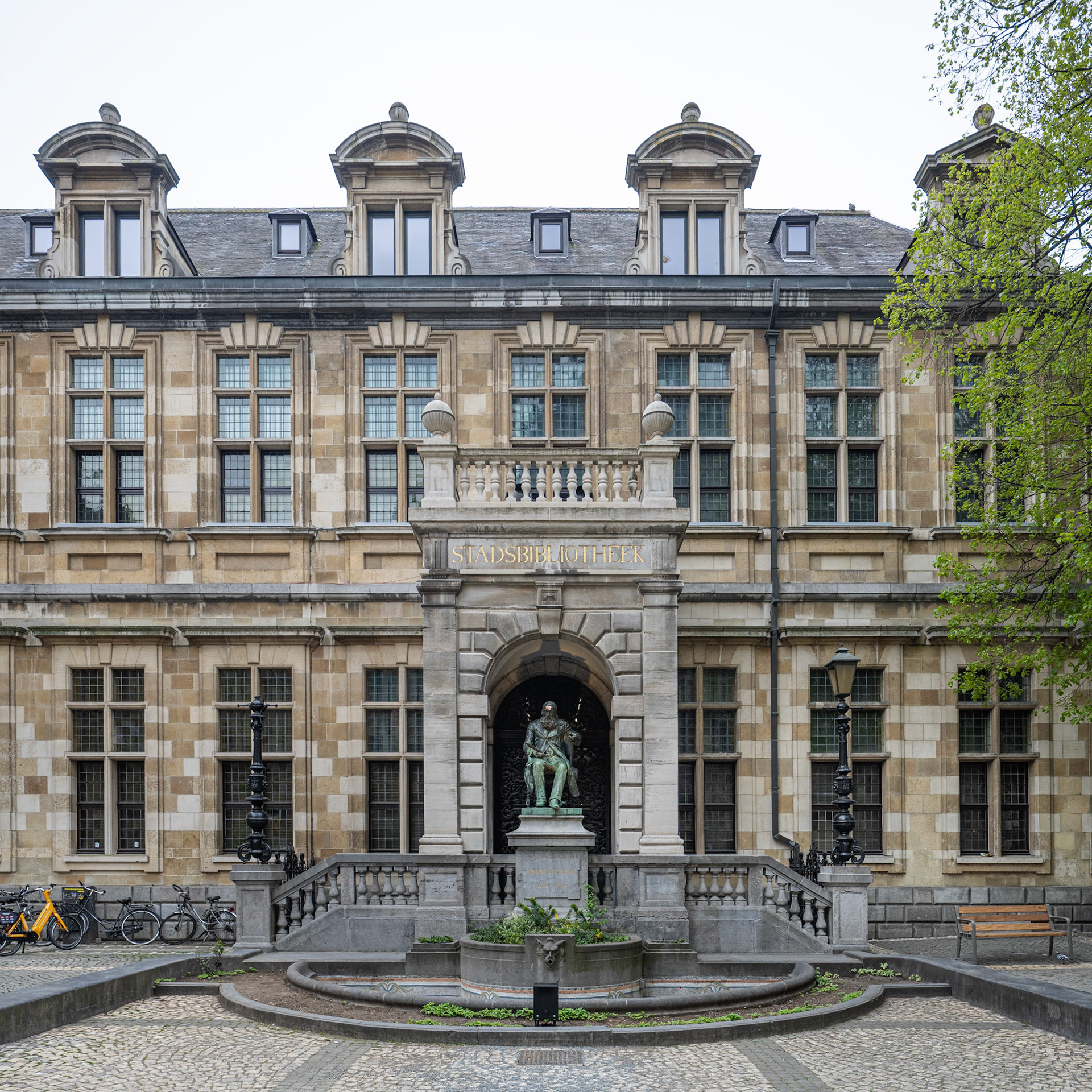
Hendrik Conscience Heritage Library - facade
One of the library’s most captivating spaces is the Nottebohm Room, named after Oscar Nottebohm, a German-born patron of the arts. Designed by architect Henri Blomme and completed in 1936, the hall now holds approximately 150,000 volumes and serves as a ceremonial and exhibition space within the library.

Nottebohm Room
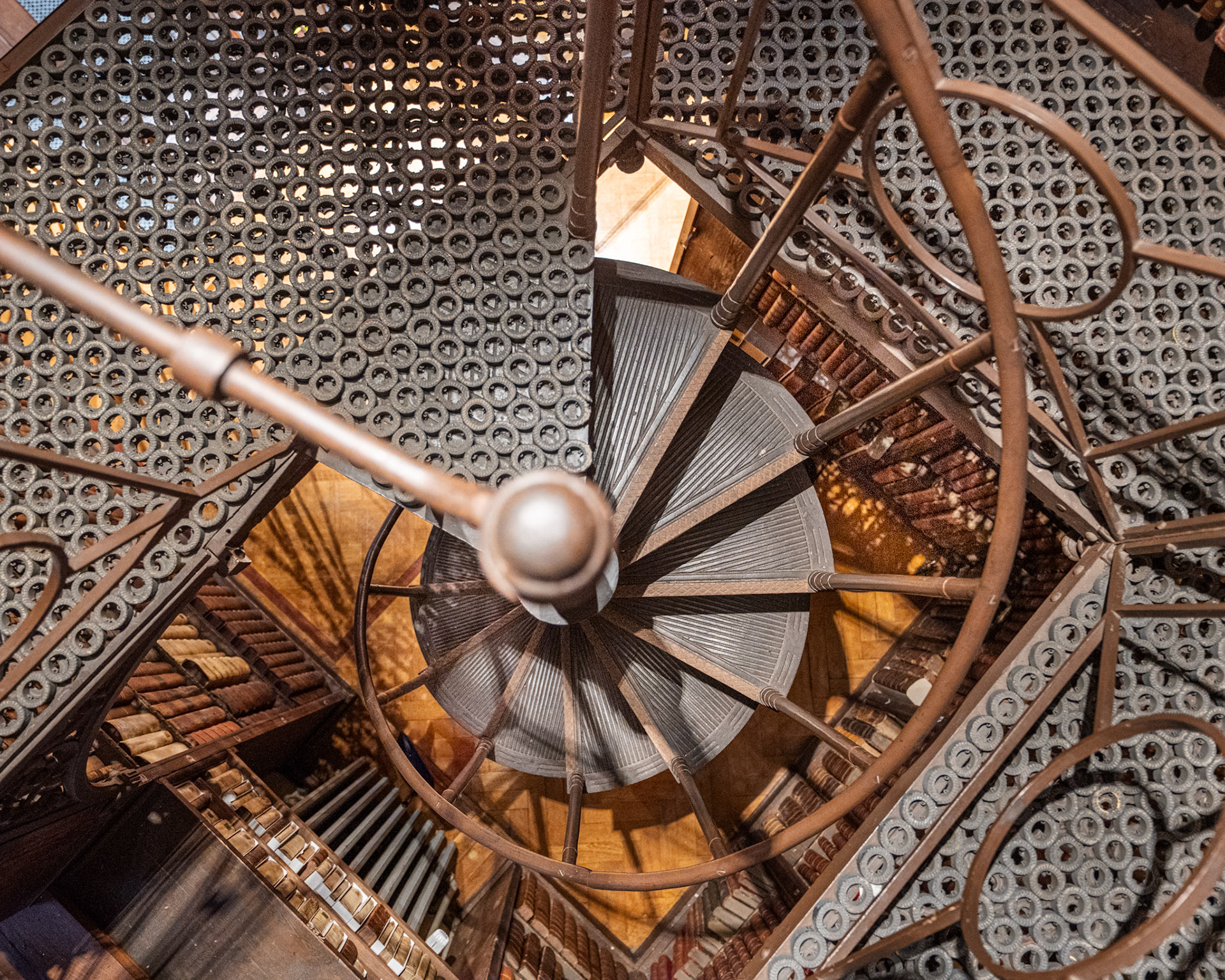
Nottebohm Room - staircase
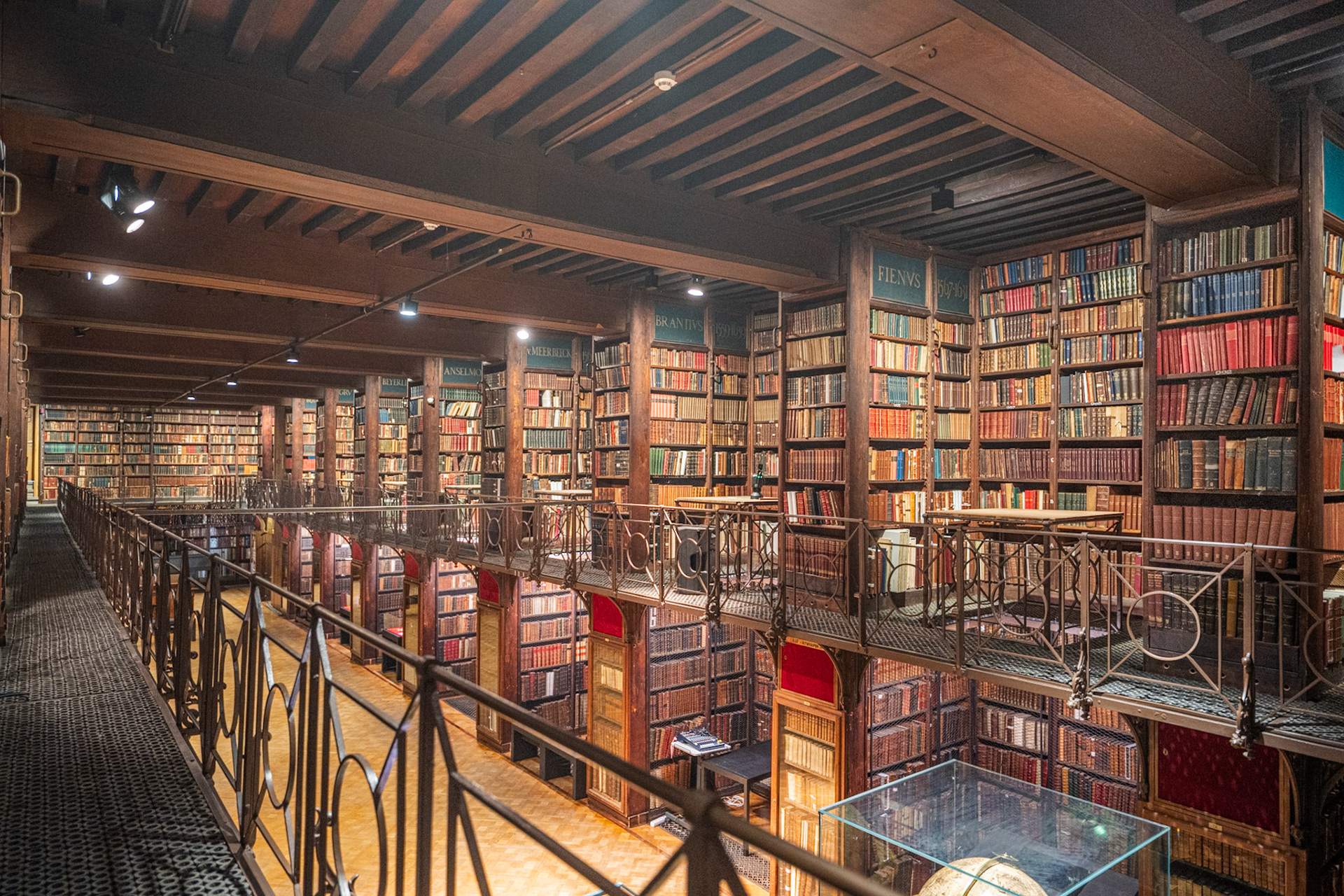
Nottebohm Room
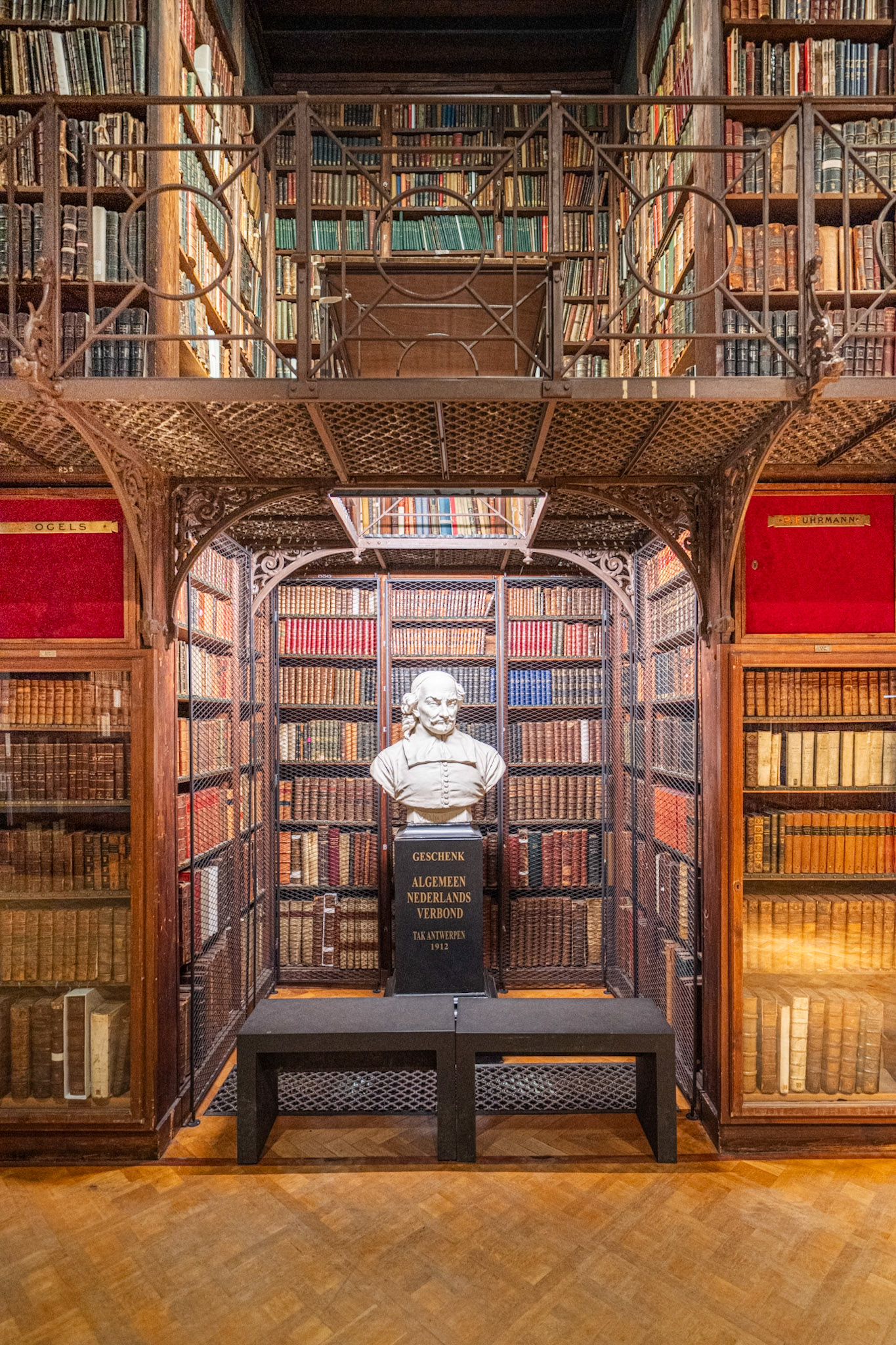
Nottebohm Room
The Nottebohm Room houses a pair of 17th-century globes, celestial and terrestrial, crafted by the Dutch cartographers Willem Blaeu and his son, Joan Blaeu. Each globe measures 68 centimeters in diameter, making them the largest produced by the Blaeu workshop. The terrestrial globe, dated between 1645 and 1648, reflects the most advanced geographical knowledge of its time. It includes detailed representations of newly discovered regions, such as parts of Australia charted by Dutch explorer Abel Tasman. The celestial globe showcases constellations based on the observations of Tycho Brahe, Blaeu's mentor, complemented by southern constellations recorded by Frederik de Houtman.

17th century celestial and terrestrial globes by the Dutch cartographers Willem Blaeu and his son, Joan Blaeu
The oldest item of the collection is a 3,000-year-old Egyptian papyrus. It narrates the journey of the priestess Djed-Maät-ious-anch through the underworld, offering insights into ancient Egyptian beliefs about the afterlife. Due to its fragility, the papyrus is preserved under a blackout cloth.
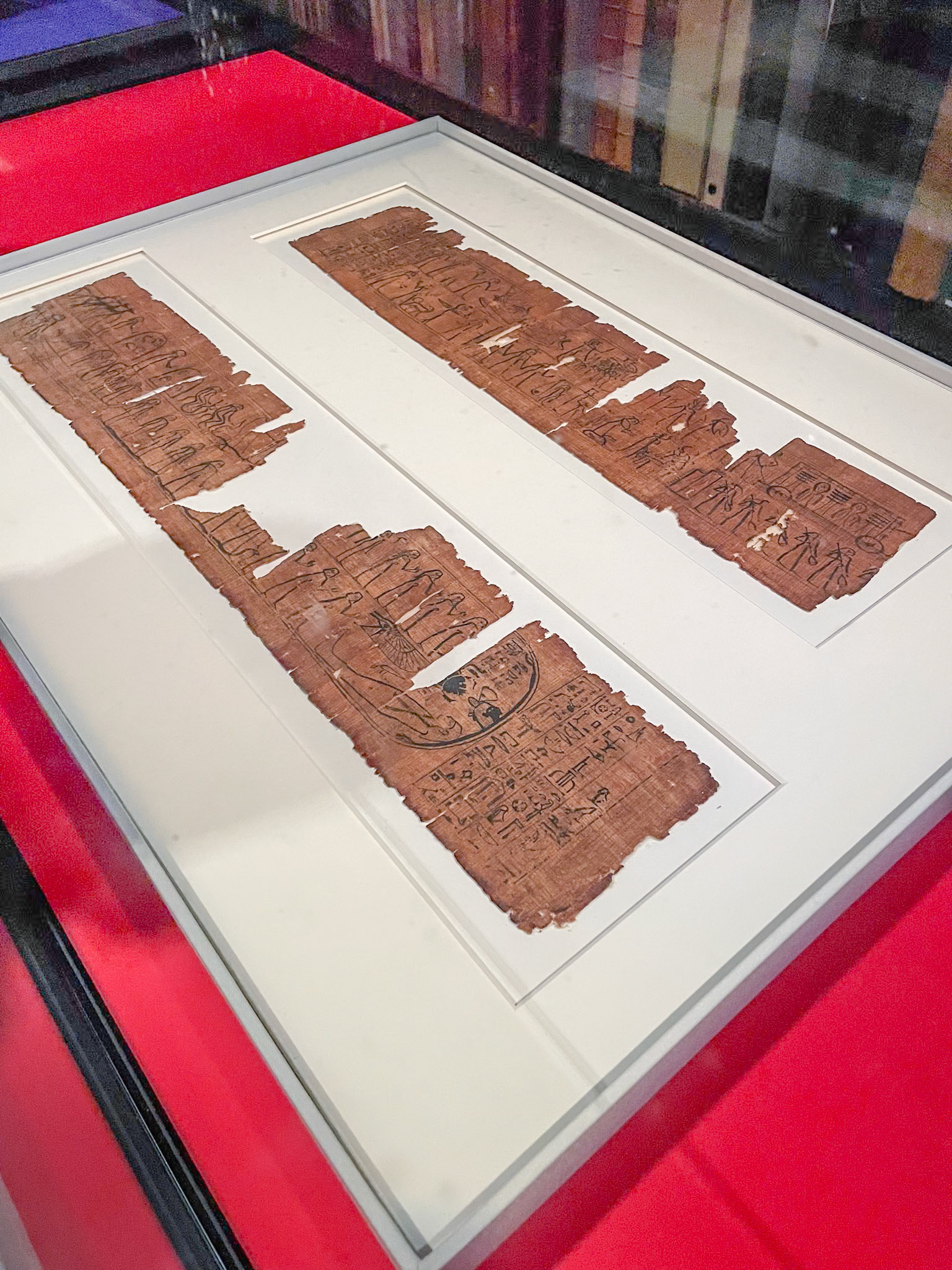
3,000-year-old Egyptian papyrus
While the room is primarily reserved for the special collections, it opens to individual visitors during the summer months.
You may also like